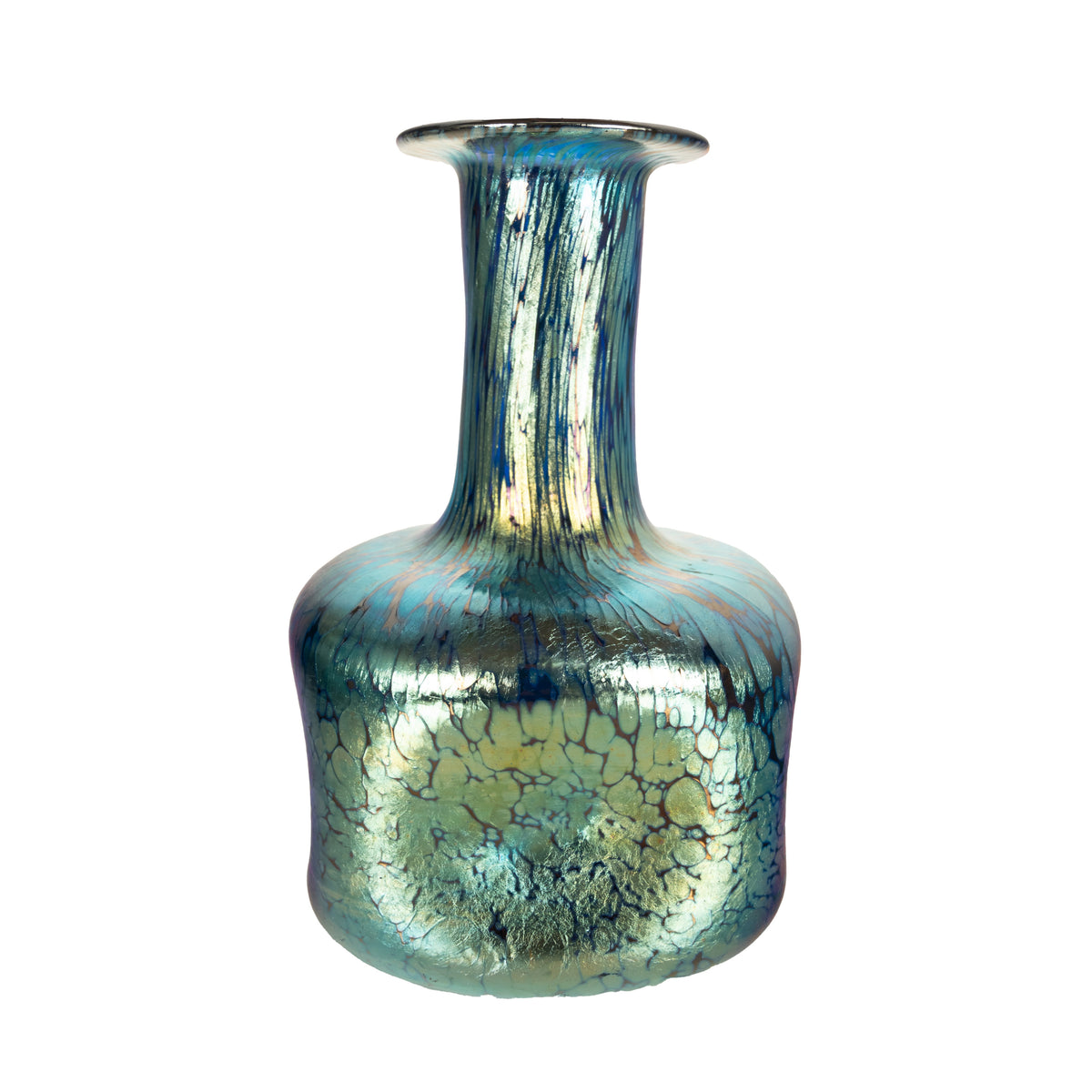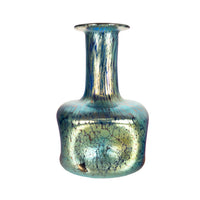Antique Austrian Art Nouveau Loetz Cobalt Blue Papillon Art Glass Vase 1900
- Regular
- $ 1,850
- Sale
- $ 1,850
- Regular
- Unit Price
- per
Antique Art Nouveau Austrian Loetz cobalt blue "Papillon" art glass vase, circa 1900.
This wonderful Loetz mouthblown art glass vase made of irridescent glass and the pattern named Papillion after the French word for butterfly, as the glass resembles the color & pattern of a butterfly's wings.
The vase of bottle shaped form with a flared circular mouth and a tall neck rising from a 'mallet' shaped base with four dimples, the vase is mouthblown and has a ground pontil mark to the base where the vase was removed from the glassblowers pipe.
Condition is excellent, this is a very fine example of an antique Loetz Papillon art glass vase
Johann Loetz Witwe (also known as Joh. Loetz Witwe and Joh. Lötz Witwe) was an art glass manufacturer in Klostermühle (Klášterský Mlýn, now part of Rejštejn) in southwestern Bohemia, Austria-Hungary and then Czechoslovakia. Johann Loetz's works are among the most outstanding examples of Art Nouveau.
In 1836, Johann Eisner established a glassworks in the Southern Bohemian town of Klostermühle, today part of the Czech Republic and called Klášterský Mlýn. His heirs sold the glassworks to Martin Schmid in 1849, and two years later Schmid sold it to Frank Gerstner, attorney-at-law, and his wife Susanne. Susanne was the widow (‘Witwe’ in German) of Johann Loetz, a glassmaker about whom we know very little.
Gerstner transferred sole ownership to Susanne shortly before his death in 1855, and she successfully led and expanded the company during the subsequent 20 years, manufacturing mainly crystal, overlay and painted glass.
In 1879, Susanne transferred the company – now called ‘Johann Loetz Witwe’ – to Maximilian von Spaun, the son of her daughter Karoline. One year later, von Spaun hired Eduard Prochaska and the two of them modernized the factory and introduced new, patented techniques and processes.
The glassworks created large numbers of its own new designs of iridescent, trailing art nouveau glass, sometimes in collaboration with well-known artists and designers like Marie Kirschner and Franz Hofstötter (aka Franz Hofstätter). The zenith of Loetz art nouveau glass was epitomized by the so-called Phänomen series of designs, much of it designed by Hofstötter, which won a Grand Prix (alongside Tiffany, Gallé, Daum and Lobmeyr) at the Paris World’s Exposition in 1900.
The company’s success during this period had two prime drivers – the technical expertise of Prochaska and the business acumen of von Spaun. Loetz Witwe created many of its own designs, and also supplied glass commissioned by major customers like E. Bakolowits (Vienna) and Max Emanuel (London).
Imperial
ches high × ches wide × ches deep
Metric
high × wide x deep
Displayed rates are for shipping in the Continental U.S. and Canada. For other locations, kindly contact us and we will provide the most competitive shipping price available. All shipments are professionally packed and shipped insured with full tracking capabilities. Customers are also welcome to collect their items from our warehouses or arrange their own shipping.






















